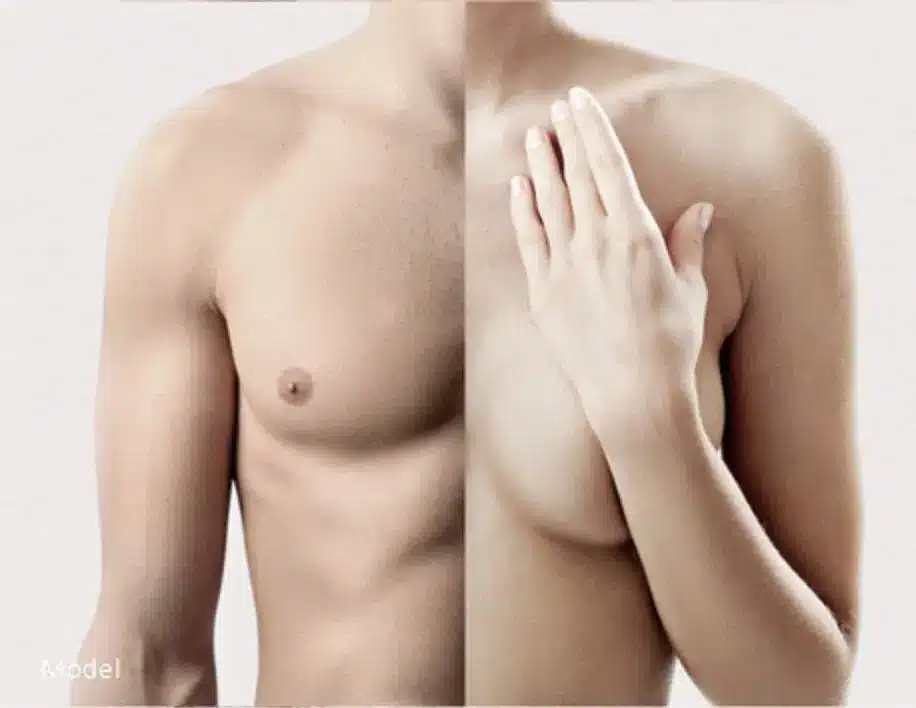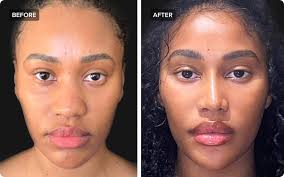Key Takeaways
- Non-surgical fat reduction, a cosmetic procedure also known as nonsurgical body sculpting, offers a less invasive alternative to liposuction surgery, with various technologies available to suit different needs and preferences for cosmetic treatments.
- Understanding the range of non-surgical methods, including cryolipolysis, laser fat reduction, and radiofrequency treatments, as well as traditional liposuction, a surgery performed by a cosmetic surgeon, helps in making an informed decision tailored to your body goals about the cosmetic procedure.
- Comparing fat reduction technologies, including surgical liposuction and other cosmetic treatments, is crucial; look at their effectiveness, suitability for your body type, recovery time, and potential side effects of technology like traditional liposuction.
- The choice of provider for non-surgical body contouring and fat removal procedures plays a significant role in the safety, success, and patient experience of the cosmetic procedure. Opt for certified professionals with experience in the specific technology you’re interested in.
- It’s essential to have realistic expectations regarding the outcomes and results of cosmetic non-surgical fat reduction treatments, including nonsurgical body sculpting, for an optimal patient experience. While fat reduction treatments and fat removal treatments, such as injections for invasive fat, can significantly improve body contour, they are not a substitute for weight loss or a healthy lifestyle.
- Finally, consider the long-term maintenance of your results through diet and exercise, as nonsurgical body sculpting, including non-surgical fat reduction injections, does not prevent new fat cells from forming in untreated areas and the effects depend on treatment time.
Understanding Fat Reduction without Surgery
Fat Removal Principles
Non-surgical fat reduction treatments, also known as nonsurgical body sculpting, work by targeting fat cells directly through injections in a procedure that yields results. They use various technologies in a nonsurgical body sculpting procedure to eliminate unwanted fat without incisions or anesthesia, enhancing the patient experience and results. These methods include fat freezing, a procedure that crystalizes fat cells, causing them to die and be processed out of the body naturally, with results seen after a specific treatment time and potential side effects.
These treatments are precise. They focus on stubborn pockets of fat that resist diet and exercise, aiming for results that enhance the patient experience with minimal treatment time and side effects. Common areas for body fat removal include the abdomen, thighs, and under the chin, with results often seen after fat reduction treatments.
Realistic Expectations
It’s crucial to have realistic expectations. Non-surgical methods, focusing on fat removal and fat reduction treatments, are for body contouring, not significant weight loss, and typically yield less invasive fat results. They’re best for those near their ideal weight but struggling with stubborn fat bulges, offering results after a short treatment time with minimal side effects based on individual experience.
These treatments reduce the appearance of fat pockets. Yet, they don’t prevent future weight gain. Maintaining a healthy diet and regular exercise is essential for lasting results.
Advantages
Opting for non-surgical fat reduction has several benefits. There’s minimal downtime and fewer side effects with these invasive fat reduction treatments, allowing patients to see results and return to daily activities quickly. The risk of complications and treatment time with fat reduction treatments is significantly lower than with surgical options, offering effects and results that are favorable.
Treatments are convenient, often taking less than an hour per session, with time-effective results and minimal effects on invasive fat. They can target multiple areas of the body, from double chins to thigh fat, without discomfort or long recovery periods, offering quick treatment time and noticeable results.
Overview of Non-Surgical Fat Reduction Methods
Cryolipolysis
Cryolipolysis, known as CoolSculpting®, is a treatment that freezes fat cells to induce their natural death. This treatment method targets stubborn fat areas without damaging the surrounding tissues. Patients often see a 20-25% reduction in fat layer thickness after one treatment. Results from the treatment typically become visible within three months as the body naturally eliminates the dead fat cells.
CoolSculpting®, a non-invasive fat reduction treatment, has received FDA clearance for use on multiple body parts, including the abdomen, thighs, and under the chin. This endorsement assures candidates of its safety and effectiveness for those specific areas, particularly for invasive fat reduction treatments.
Laser Treatment
Laser Treatment, or SculpSure®, uses controlled heat to destroy fat cells under the skin. This treatment procedure is fast, with each session lasting about 25 minutes. SculpSure® treatment is FDA-cleared for reducing fat in the abdomen, flanks, back, thighs, and under the chin.
Patients can expect to see a 24% average reduction in stubborn fat after treatment. Visible results usually appear six to twelve weeks post-treatment as the body processes and removes the disrupted fat cells.
Injectable Deoxycholic Acid
Injectable Deoxycholic Acid, branded as Kybella®, breaks down dietary fat for absorption into the body as a treatment. It’s primarily used as a treatment for reducing moderate to severe fat below the chin, known as submental fullness.
Kybella® treatment has also been cleared by the FDA, ensuring its efficacy and safety profile. Most patients achieve their desired outcomes after 2 to 4 treatments, witnessing significant fat reduction beneath the chin within four to six weeks of their final session.
Comparing Fat Reduction Technologies
Cryolipolysis Efficacy
Cryolipolysis, often known as fat freezing treatment, targets and cools fat cells to a temperature that causes their natural death. Studies show treatment can reduce fat layers by up to 25% in treated areas. It’s best for areas like the abdomen, thighs, and under the chin for treatment.
Patients typically see full results from the treatment in one to three months. This treatment method has minimal side effects, mainly involving temporary numbness or redness.
Laser Treatment Benefits
Laser treatments use controlled heat to destroy fat cells without damaging the skin. This technology is effective for both small and larger areas, including the abdomen and flanks, as a treatment. Patients can expect a 10-20% reduction in fat after a series of treatments.
Recovery is swift, with most resuming daily activities immediately. However, some might experience minor swelling or discomfort.
Injectable Solutions
Injectable treatments dissolve fat through a series of injections into targeted areas, such as under the chin. They’re ideal for treatment of smaller fat pockets not suitable for other technologies. Fat reduction treatment can vary but generally offers subtle improvements over time.
Side effects of the treatment include swelling, bruising, and tenderness at the injection site. Recovery times from treatment are short, with most side effects subsiding within a few days.

Choosing the Right Provider
Provider Experience
Selecting a provider with extensive experience in non-surgical fat reduction treatment is crucial. This ensures not only safety but also the achievement of optimal results in treatment. Providers should have a solid track record of successful treatments, showcasing their ability to tailor approaches for different target areas.
Experienced providers understand that each patient’s needs are unique. They excel in creating personalized treatment plans that align with individual body contouring goals.
Consultation Questions
During a consultation, it’s important to ask specific questions. Inquire about the provider’s qualifications and the number of treatments they’ve performed. Requesting before-and-after photos of previous patients’ treatment can offer insight into the potential outcomes.
Questions should also cover how they plan to address your specific target areas with treatment and if they consider you an ideal candidate for non-surgical treatment options. This conversation helps set realistic expectations for the patient experience and minimal downtime involved in the treatment.
Personalized Plans
Look for providers who conduct comprehensive assessments. They should offer personalized treatment plans based on your body contouring goals and medical history. A great option will help ensure compatibility with maintaining a healthy lifestyle post-treatment.
Providers who take the time to understand your objectives can better determine the most effective treatment way to achieve them. This approach enhances both the safety and efficacy of non-invasive treatment options, making them an ideal choice for candidates seeking minimal downtime.
Final Remarks
Navigating the world of non-surgical fat reduction and body contouring treatments can seem daunting, but armed with the right information, you’re well on your way to making informed decisions that align with your aesthetic goals. The key lies in understanding the various technologies available, how they compare, and choosing a provider who meets your needs with expertise and care. Remember, the goal isn’t just about shedding unwanted fat—it’s about sculpting a body that boosts your confidence and reflects your inner self. As you contemplate taking this step towards a more contoured silhouette, consider not just the immediate effects of the treatment but how these choices fit into your long-term wellness journey.
Ready to take control of your body contouring journey? Reach out to a trusted treatment provider today and explore the possibilities that await. Your path to a more confident you is just a treatment consultation away.
Frequently Asked Questions
What is non-surgical fat reduction?
Non-surgical fat reduction treatment involves using various technologies to reduce fat cells without surgery, offering a less invasive alternative to liposuction with minimal downtime.
How do non-surgical body contouring treatments work?
These treatments typically use cooling, heat, ultrasound, or radiofrequency to target and destroy fat cells, which are then naturally eliminated by the body over time.
Can anyone undergo non-surgical fat reduction?
Most adults in good health who have stubborn fat areas but do not want surgical procedures are good candidates for treatment. However, it’s not a weight-loss solution or a suitable treatment for those significantly overweight.
How long does it take to see results from non-surgical fat reduction?
Results can vary but generally start to appear within a few weeks of treatment, with full results visible after two to six months as the body processes and removes the destroyed fat cells.
Is non-surgical fat reduction permanent?
Yes, the fat cells destroyed during the treatment procedure are permanently removed. However, gaining weight after treatment can cause remaining fat cells to enlarge, affecting results.
How do I choose the right provider for non-surgical fat reduction?
Look for providers with proven expertise in non-surgical body contouring treatments. Check their credentials, read reviews, view before-and-after photos of their patients, and consider their experience with different technologies and treatment.
What is the difference between CoolSculpting and SculpSure?
CoolSculpting treatment uses controlled cooling to freeze and destroy fat cells, while SculpSure treatment uses laser technology to heat and eliminate them. Both are effective; the choice depends on your specific needs and consultation with a provider.











